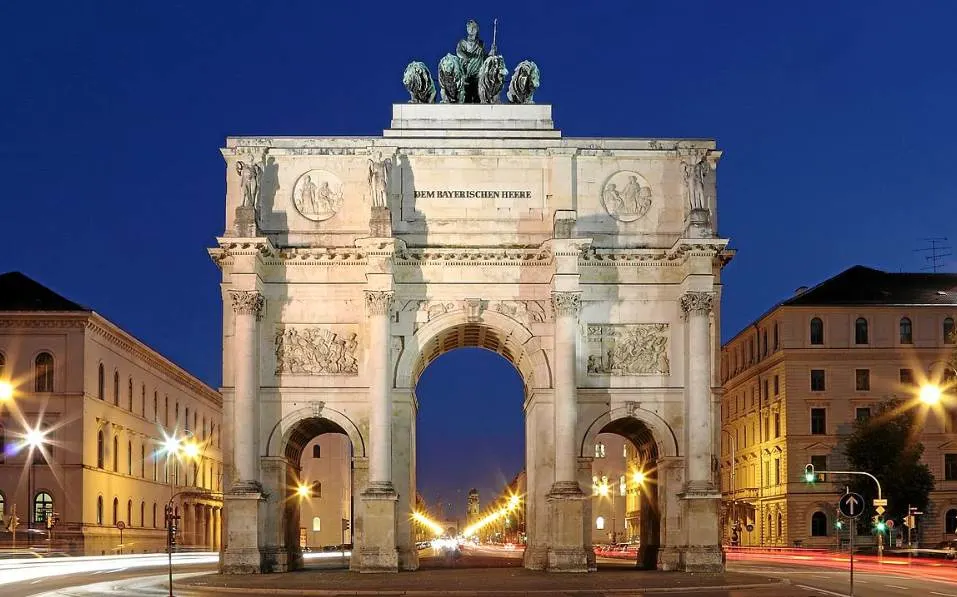One of the most amazing arches in the world was once dedicated to a victorious army, but its purpose was radically changed following the conclusion of World War II.
In this article, we’ll take a closer look at some of the most interesting facts about the Siegestor in Munich, one of the most fascinating landmarks in this German city.
1. The arch located just north of Munich’s historical heart
The Siegestor is a triumphal arch that looks very similar to the arches that were constructed in ancient Rome such as the Arch of Titus and the Arch of Constantine.
The arch was built where the Ludwigstraße in the south ends and the Leopoldstraße in the north begins. This is just north of the historical heart of the capital city of the German state of Bavaria in the southern part of the country.
The central location of the arch in the third-largest city in Germany means that it’s surrounded by multiple other famous landmarks and buildings.
The former royal palace called the Munich Residenz is just walking distance south and the city’s most popular museum the Alte Pinakothek is at an equal distance to the southwest.

2. It was commissioned by the King of Bavaria in the 19th century
The arch was commissioned by King Ludwig I of Bavaria (1786-1868) as a monument to commemorate the glory of the Bavarian Army.
This means that it originally had the same purpose as the Arc de Triomphe in Paris, as well as many of the triumphal arches that were constructed during the Roman Empire.
The first architect to work on the project was Friedrich von Gärtner (1791-1847) but he passed away before the monument was completed.

It was eventually completed by a local architect named Eduard Mezger (1807-1894) and dedicated in the year 1854.

3. The arch is topped by a bronze quadriga that is pulled by lions
Many arches that were constructed in modern times are topped by monumental sculptures. Seeing a quadriga being pulled by horses isn’t uncommon.
Some great examples are the Brandenburg Gate in Berlin and the Arch of the Cinquantenaire in Brussels.
The Siegestor in Munich is topped by a quadriga sculpted by a German artist named Johann Martin von Wagner (1777-1858).
What’s remarkable about this particular sculpture is that the quadriga is pulled by lions instead of horses. This is a reference to the coat of arms of the House of Wittelsbach, the ruling dynasty in Bavaria at the time.
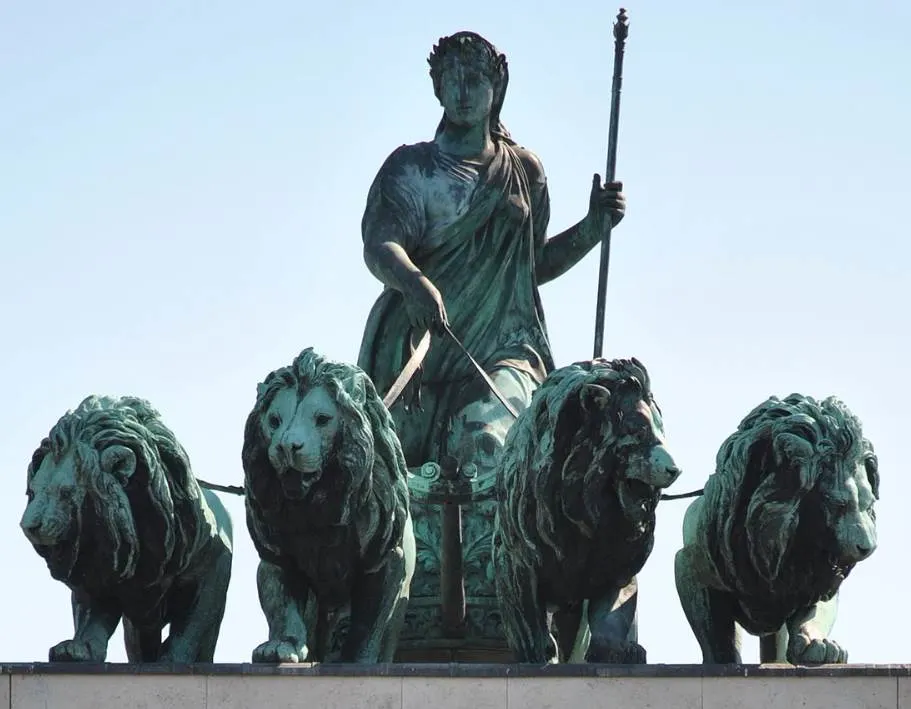
4. How big is the Siegestor in Munich?
The SIegestor is far from being the largest triumphal arch in the world but is still a pretty impressive monument in the heart of Munich.
The arch has the following dimensions:
- Height: 21 meters (69 feet)
- Width: 24 meters (78 feet)
- Depth: 11 meters (36 feet)
To give some reference to these figures, this is slightly shorter than the Brandenburg Gate which stands 26 meters (85 feet) tall, but less than half the height of the Arc de Triomphe which stands 50 meters (164 feet) tall.
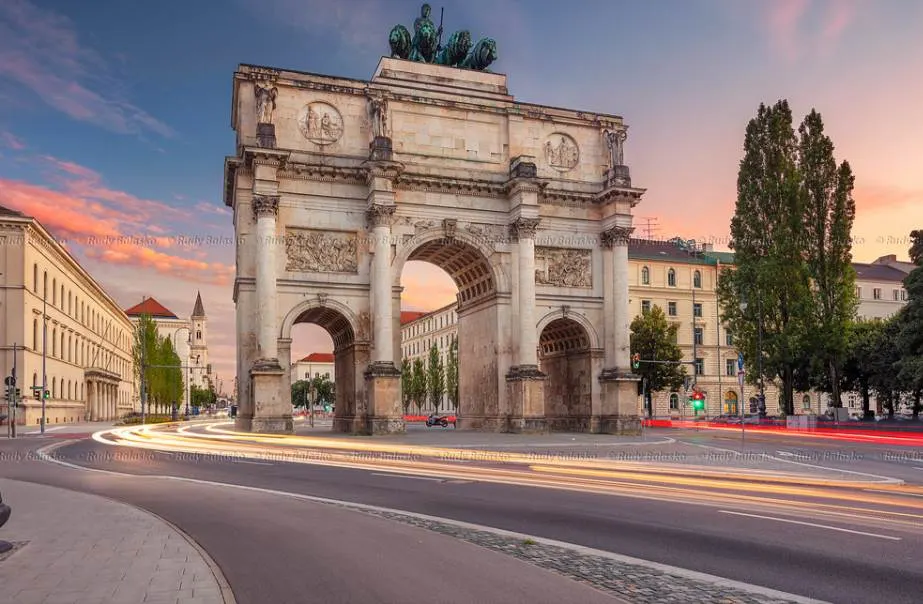
5. It was scheduled to be demolished after WWII but restored and rededicated
The original inscription on the arch was a dedication to “Dem Bayerischen Heere” or the Bavarian Army by King Ludwig I.
The arch suffered tremendously during World War II and was in such a terrible state that it was scheduled to be demolished in July 1945.
Because of the historical significance of the monument, it was partially restored instead and rededicated to something completely different as the current inscription reads:
Dem Sieg geweiht, vom Krieg zerstört, zum Frieden mahnend.
This translates to “Dedicated to victory, destroyed by war, urging peace.,” This means that the arch is now a monument dedicated to peace.
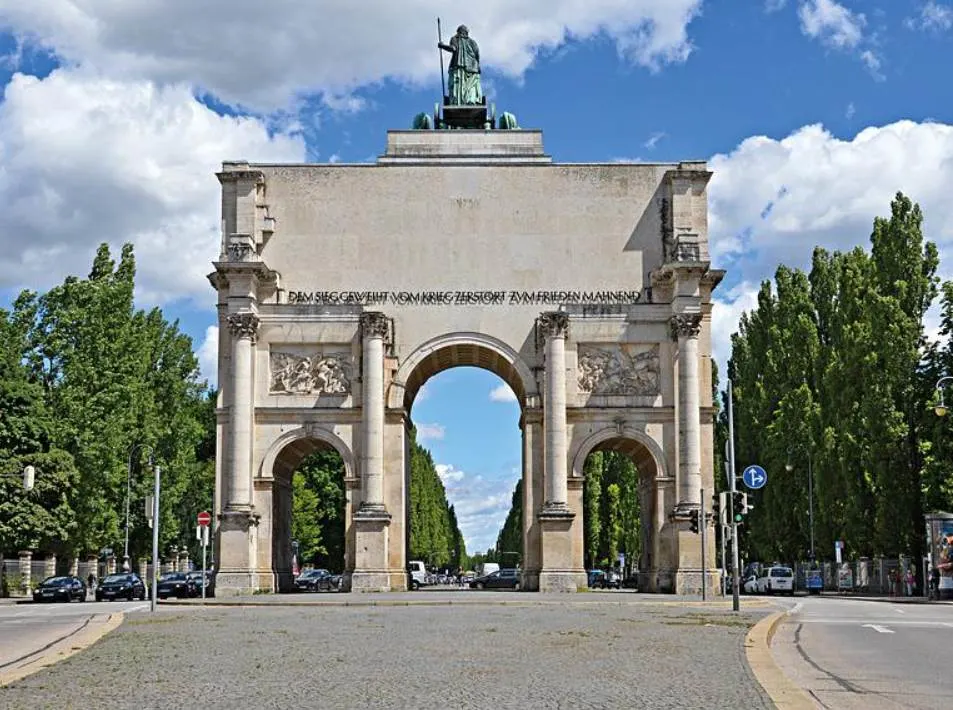
More interesting facts about the Siegestor in Munich
6. The name of the arch, “Siegestor,” translates to “Victory Gate.” This is a reference to its original dedication as a monument that glorified the Bavarian army.
7. It’s not the only monument in Germany that was rededicated after being partially destroyed by bombs during World War II. The Kaiser Wilhelm Memorial Church suffered the same faith in 1943.
Shortly after the conclusion of the war, the church was partially reconstructed and a memorial hall was integrated into the building’s design. It’s known today as the “Gedächtniskirche.”

8. The arch is located right on the border of Maxvorstadt, a central borough in Munich, and Schwabing, a borough in the northern part of the city.
9. You’ll find a lot of students hanging out in the area near the arch because two major institutions are located just next to it.
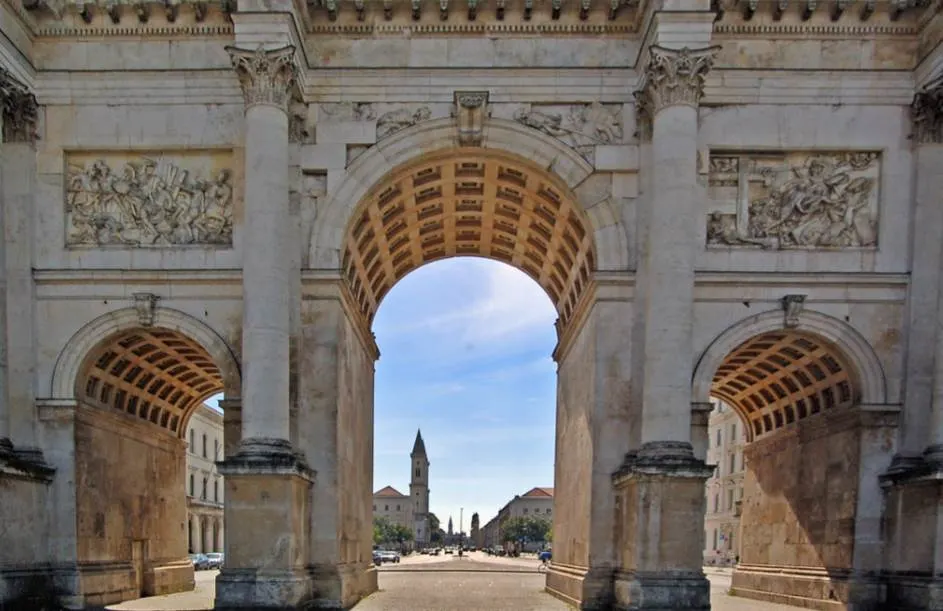
Just west of the arch there’s an art academy called the “Akademie der Bildenden Künste München” and just south of the arch you can find a public university called the “Ludwig Maximilian University of Munich.”
10. The arch is easily accessible via a nearby subway station. This station is situated just south of the arch and is called “Universität,” a reference to the nearby University.
